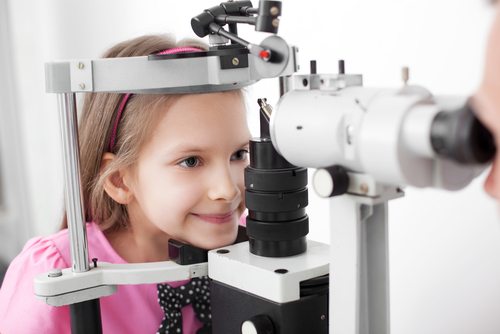As an eye care center in Summerville, SC, we know that taking your child for their first eye exam can be nerve-wracking for both the child and the parent. Vision is such an important learning sense in the early years, with roughly 80% of school-based learning being a visual process. Vision allows your child to learn about the world around them, making it vital for their development. Many schools in Summerville offer free eye exams at key points during the early years of education. Still, school eye exams are not as thorough or effective as those carried out by professional optometrists. If you’re wondering when and how to book your child’s first eye exam, this guide will run through everything you need to know.
The right age
If you think that your child has to read before they can have an eye exam, you might be surprised to find that they can be tested even when they are infants. A good rule of thumb that most opticians recommend is that unless you have any specific concerns, then your child’s first professional eye exam should be when they are around three and a half. This is the ideal time to make sure that they have no vision difficulties before starting their full-time education. Three and a half is ideal because:
- Even if you have no concerns over your child’s eyesight, a full test will ensure that they have no issues when they start having to learn in a school environment.
- The earlier you catch any unexpected issues, the easier it is for you to find the right solutions, meaning that their education won’t suffer.
Not being able to see at school doesn’t just make learning more difficult. It can also lead to behavioral problems.
Recognizing the warning signs
Knowing what to look for regarding how well your child can see will make it easier to recognize when you need to book your child’s first eye exam. Here are some of the things that you need to look out for:
In babies – Every baby over the age of three months should have the ability to follow and track an object visually. Use a toy, move it around in front of them, and if they are unable to focus or keep track of the toy, then it’s worth making an appointment earlier.
Many parents notice that before their child reaches four months old, they have slightly misaligned eyes. This is common and should resolve itself naturally. However, if it continues after four months, and your baby still has inward-looking or outward drifting eyes, then let your doctor in Summerville know. They will advise you to have a professional eye exam.
Pre-school – Some eye conditions can arrive without warning and may not even affect your child’s vision immediately. Lazy eyes (amblyopia) are more common than you might think, with up to 1 in 50 pre-school children developing the issue.
Children of any age – The following list of symptoms and signs can help you be more aware of your child’s eyesight problems. If you recognize any of the following in your own children, no matter how old they may be, then an eye exam should be booked as soon as possible:
- Eyes that are misaligned
- Pupils that are white or gray
- Fluttering eyes
- Any indication of eye pain, discomfort, or itchiness
- Redness in the eyes
- Excessive crusting or the appearance of pus
- Overly watery eyes
- Eyelids that are drooping or appear to be excessively heavy
- An over-sensitivity to light
Taking your child for their first eye exam does not need to be a worry. Most issues will be able to find a resolution that will reduce any negative impact on their lives.
Eye Exams – What to Expect
Not many people remember their first eye exam, and that can make it even more daunting for parents. The thing to remember is that the more you know about the process, the easier it will for you to explain what will happen to your child. Set your mind at ease with this step by step checklist:
1. Making your appointment
Don’t simply book your appointment in Summerville according to your own schedule. Try and ensure that the eye exam will fit into the child’s daily routine as natural as possible. You want your child to be alert during the exam, so consider early morning appointments or after they have enjoyed their afternoon nap.
Vision is affected by tiredness, so the more rested and awake they are, the more the optician will make an accurate evaluation.
2. Pre-exam
You will be as much a part of the test as your child. This is because your optician needs to know about your child’s and your medical history. It might be worth making sure that you have a list ready, and make sure that your optician is aware of the following:
- If your child was born prematurely
- Whether your child is developing motor skills slowly
- If you have any specific concerns, such as excessive eye rubbing
- Excessive blinking
- Infrequent or rare eye contact
- No focusing or ability to track an object in front of them
Your own medical history is going to be important as well. If you have any eye issues in your family, you need to let your Summerville optician know. If you or any of your family wear eyeglasses or have a history of vision problems, then your optician will need to be aware of them. This is especially true of serious conditions, so if you have a family history of diseases such as glaucoma, then make sure that your optician knows.
3. The Eye Exam
There are three main tests that your optician will run on your child. These will be:
- Pupil Response – Checking that the pupils can open and close correctly.
- Fix and Follow – This is to ensure that your child can follow and track moving objects.
- Observation – Ensuring that your child can notice new visual information.
If your child’s first eye exam reveals some issues, then you must remember not to panic. The earlier that you catch vision problems, the easier and more effective the treatments can be. Follow the advice of your optician, and your child’s first eye exam could be over before you both know it.

